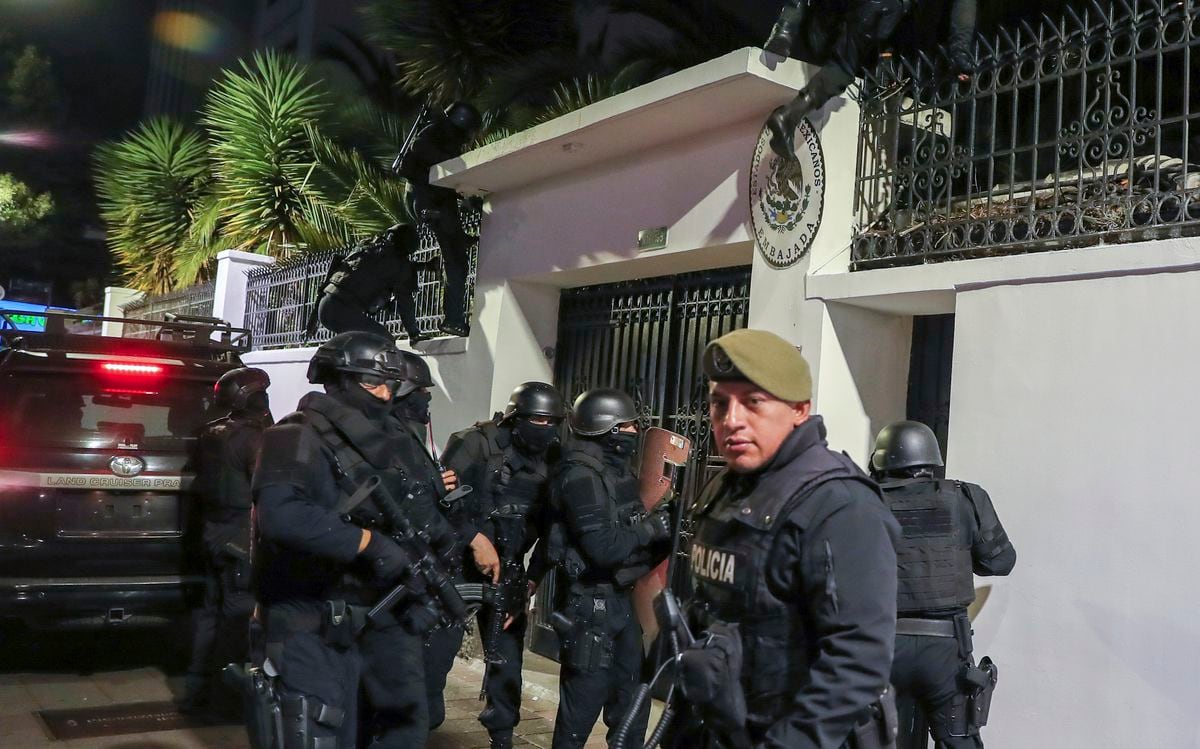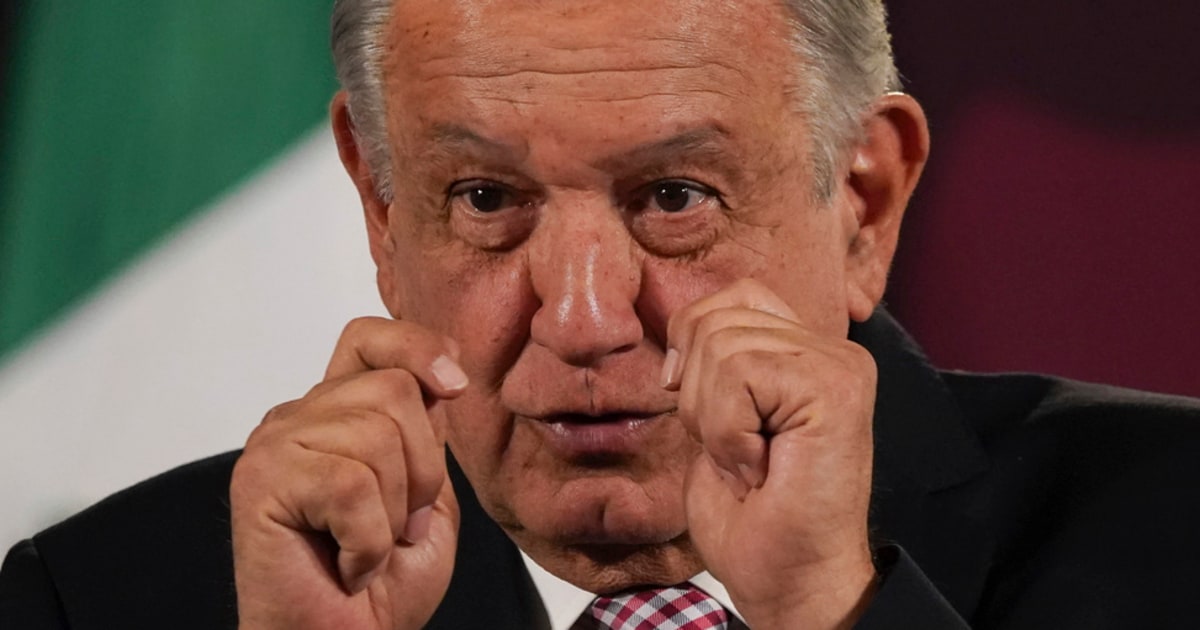Lithograph of the Battle of Champoton, 1517 COURTESY
In April 2019, the last time that President Andrés Manuel López Obrador visited Champotón - a coastal municipality in the state of Campeche, in the Yucatán Peninsula - he made a short clarification about the official history of the place.
“Here in Champotón it was the battle of, they say, the
bad fight
, the president told about the small coastal municipality where a historical battle between Spaniards and indigenous people took place in 1517. But López Obrador was immediately corrected: what happened there was actually the
good fight
.
Good because, unlike what would happen in many subsequent battles, this confrontation was won by the indigenous Mayan peoples of Yucatán 504 years ago.
"Well, we are applying the same to the corrupt," said the president, associating the indigenous victory with his official speech.
"Take your Champoton!"
Two years later, López Obrador returns to Champotón this Thursday to celebrate the third of the 15 events organized by the presidency to commemorate 500 years of indigenous resistance against the Spanish conquest (in 1521, four years after the Battle of Champotón, Tenochtitlan would fall to the Hernán Cortés's troops), and 200 years since independence.
Events that, rather than narrating the past in a different way, have been a platform for the president to draw himself in history as the Fourth Transformation of Mexico, before its citizens and the international community.
Each one has had a special guest: for the first, commemorating the first Afro-Mexican president Vicente Guerrero, the presidency invited one of the sons of Martin Luther King Jr .;
for the second, commemorating the Pact of Iguala that led to independence, an ally in the region, the president of Argentina Alberto Fernández, arrived as a guest.
For this third event, Luis Arce, president of Bolivia, will now be a symbolic presence to celebrate the indigenous rebellion with the head of state of the plurinational Andean country.
"We invited him because they represent the dignity of an entire people that fights for justice, for freedoms, for democracy and to assert the sovereignty of the peoples of the nations," explained Obrador.
Andrés Manuel López Obrador, President of Mexico attends the delivery of the Comprehensive Wellness Programs, in Champotón, in April 2019. Presidency / CUARTOSCURO
Earlier this month, at an event inaugurating a section of the Mayan Train in Campeche, the megaproject that environmental and indigenous organizations in the area have opposed, López Obrador took up the explanation of the
good fight
.
“One of the colonizers wanted to take Champoton and the people, the Mayans, did not allow it.
There was a battle and the Spanish invaders of that time were defeated ”, explained Obrador.
“They respectfully call it
The Battle of the Bad Fight
and those of Champotón, Campeche, Mexico, we could say
The Battle of the Good Fight
.
It's like
Sad Night
or
Happy Night
, it depends on how things look ”.
The bad fight
is, indeed, an expression of the Spanish.
Although it is not the only one, the main source that historians found about the first successful indigenous military rebellion in the territory that is today Mexico comes from a chronicle written by a Spanish soldier named Bernal Díaz de Castillo.
At the end of his life, the soldier wrote his memoirs in
True History of the conquest of New Spain
.
"With a lot of work God wanted us to escape with the lives of power of those people," Diaz recalled about the battle in which 57 of his own died.
"They named him the pilots and sailors Costa de Mala Pelea."
Today the words of the Spanish soldier and his defeated companions are engraved on the official shield of the municipality of Champotón: Bahía de la Mala Pelea, says the insignia of the place.
"It is the first source that describes the battle in detail," Alfredo Ávila, a history professor at the National Autonomous University (UNAM), explained to EL PAÍS about the document of the Spanish soldier who would later join the troops of Hernán Cortés.
"A good part of what we know about the conquest we know from letters from Hernán Cortés, residence trials of the conquerors, and from this story by Bernal Díaz del Castillo."
The soldier had initially arrived in Cuba, the island from which he left on February 8, 1517 with an expedition of 110 men divided into three ships and led by Francisco Hernández de Córdoba.
With the approval of Governor Diego Velázquez, eager to recruit indigenous slaves and colonize new lands in the West, Díaz and his companions received the blessing of a clergyman and “entrusting ourselves to God Our Lord and the Virgin Saint Mary Our Lady, his blessed Mother, we began our trip".
After several weeks, the soldier says, they found "land that had never been discovered or heard from before."
It was the Yucatan peninsula, where they made two stops before approaching the coast of Chakan Putúm, today Champetón, to supply their containers with water.
There, "we saw many warrior Indians coming down the coast with their cotton weapons, and bows and arrows," wrote the soldier, who at one point estimated that there were 200 indigenous people in the area for every Spaniard.
“They made their squads and surrounded us on all sides, and they give us such a spray of arrows and rods and stones thrown with slings, that they wounded over eighty of our soldiers, and they joined us foot to foot, some with spears and others with arrows, and with razor blades ”.
Francisco Hernández de Córdoba, the captain, received ten arrows and Díaz remembers him bathed in blood.
"Seeing our captain that our good fighting was not enough, and that so many squadrons surrounded us (...) we agreed with very strong hearts to break through their battalions and take refuge in the battles we had on the coast."
They fled to the three ships and, mortally wounded and without water to drink, they left for Cuba, where Córdoba died days later.
"Unlike central Mexico, where the majority of indigenous peoples supported the conquerors, in the Yucatan area there has been a long tradition of military resistance and after rebellions," explains historian Federico Navarrete, professor at UNAM and director from the historical disclosure page Noticonquista.
Although the year after the historic battle the Spanish returned to Yucatán and managed to dominate the Champotón settlers, the Spanish empire did not manage to dominate the Mayan people until 1697 - more than a century and a half after the fall of Tenochtitlán - when they achieved to appropriate Petén, in Guatemala.
"What happened in Champotón has nothing to do with what happens in Mexico-Tecnochitlan," explains Navarrete.
“The Mayans were more difficult to conquer than the peoples of central Mexico.
In the center there was a cultural adaptation, which allowed new indigenous identities within the colonial regime.
I would like, in the ideal world, to be recognized that there were many different responses: take into account the diversity of the same indigenous people in this process ”.
Fishermen in the port of Champotón, in January of this year.Monica Gonzalez / El País
By focusing on a military battle to commemorate Mexico's indigenous resistance, the historian says, you run the risk of losing all those nuances necessary to remember the 500 years of resistance since the fall of Tenochtitlán.
“We always tend to value armed resistance more than non-military ones, but the resistance that has been imported for indigenous peoples is, precisely, non-military ones.
The obsession with battles is very much that of nation-states, which understand power as domination, as violence, ”he told EL PAÍS.
The 15 events organized by President Andrés Manuel López Obrador are administered by different government agencies, and in the case of Champotón, the organizers were officials from the Secretary of the Navy.
"We are interested in showing how the Mexican people resisted in that battle, and that this battle is like an icon of independence," Captain César Carbajal told EL PAÍS.
In addition to the speech by Obrador, and the president of Bolivia, the Navy decided that the event should also have a theatrical performance with actors from Champotón to commemorate 504 years of the battle.
In charge of the work before the two presidents will be Albín Fernando Rosado Vela, a professor at the Campechano Institute, who was born and raised in Champotón.
Although she had to resort to fiction to interpret some scenes (she mentions having a Mayan actress who raises her fist when she sees the withdrawal of the Spanish, a gesture of celebration that comes from her imagination), she also “worked on this interpretation with the book she manages Bernal Díaz del Castillo ”.
For the play he worked with 110 actors, including students and teachers from the town, but also 35 sailors who will play the Spanish army.
"From a very young age I have seen many civic acts about the battle, and I always heard from Champotón how the shield says: we are the Bay of Bad Fight," says Rosado.
“The great message of this representation is that the Mayan people, the people of Mexico, did everything possible to defend their lands, the chief Moch Ko'woj managed to fight the Spanish.
Perhaps the Mayans did not write, but this triumph was certainly not the
bad fight.
It was the
good fight
.
Subscribe here
to the
newsletter
of EL PAÍS México and receive all the informative keys of the current situation of this country


/cloudfront-eu-central-1.images.arcpublishing.com/prisa/GJFCNCM6TNAC5PJK5YHBZ3DI7A.jpg)
/cloudfront-eu-central-1.images.arcpublishing.com/prisa/WT5BBUFX4FCD5HOYEGBOT2NYFY.jpg)
/cloudfront-eu-central-1.images.arcpublishing.com/prisa/ROUPNH6I55BCHIXUOGEHSJZB6Y.jpg)


/cloudfront-eu-central-1.images.arcpublishing.com/prisa/SUXSGP2YZBHQLNK4QN5DDKB32U.jpg)







